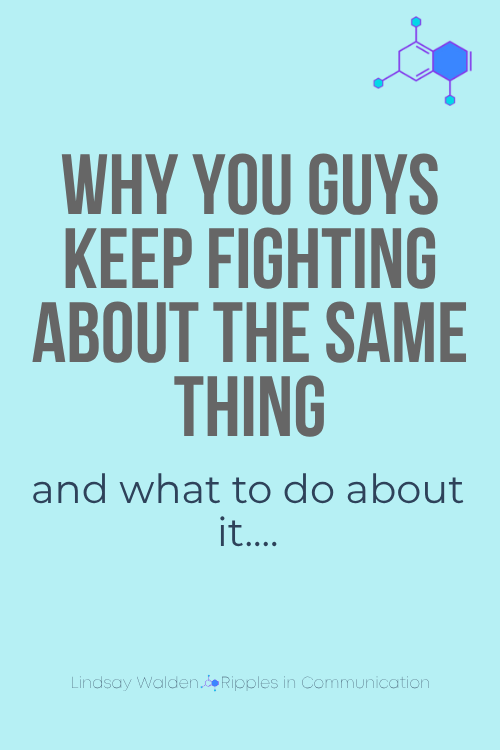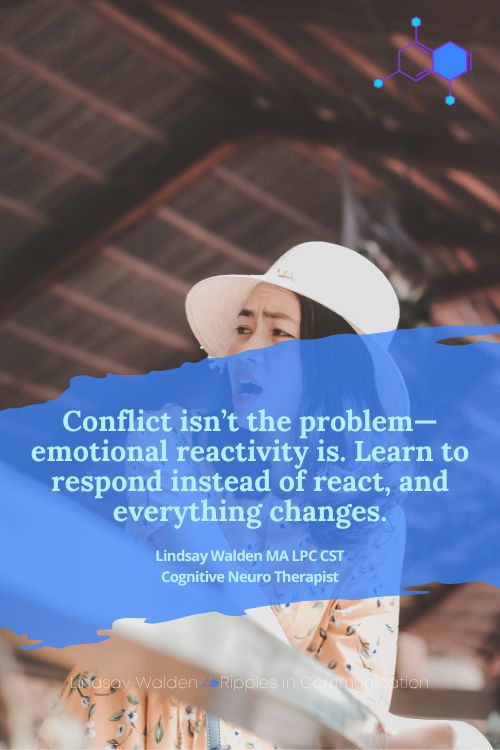5 Proven Steps to Stop Arguing and Actually Hear Each Other
Conflict in relationships is inevitable. But the way you handle it? That’s what defines the strength, intimacy, and longevity of your connection.
For many couples, arguments become exhausting loops—fighting about the same issues, feeling unseen or misunderstood, and either lashing out or shutting down. And even with the best intentions, most of us end up stuck in reaction patterns that feel impossible to break.
But here's the truth: conflict isn’t the problem. Emotional reactivity, miscommunication, and unresolved triggers are. And until you learn how to work with them (not just around them), even the most loving relationship can feel like a minefield.
That’s where Cognitive Neuro Therapy (CNT) offers a game-changing approach.
CNT helps you understand the why behind your reactions—how your brain processes conflict, where your triggers live, and what you can do to regulate emotion and create connection in real time. And once you learn how to reflect before you react, everything shifts.
In this post, you’ll discover:
The neuroscience behind emotional reactivity during conflict
The most common mistakes couples make that keep them stuck
5 structured, science-backed steps to resolve arguments and deepen connection
How to apply reflection tools you can use immediately in your relationship
Let’s get into it.
Oh before you continue!
Have you grabbed your FREE CNT Toolkit Sampler yet? It’s packed with science-backed tools designed to help you regulate emotions, manage stress, and develop deep self-awareness. If you’ve ever felt overwhelmed by your reactions or stuck in negative thought patterns, this toolkit will give you the proven strategies I use with clients to help them strengthen emotional neutrality, rewire unhelpful responses, and build lasting resilience. Inside, you’ll find practical exercises and guided reflections to help you navigate challenges with clarity and confidence. Enter your email below, and I’ll send it straight to your inbox!
Conflict Isn’t the Problem—Your Brain’s Reaction Is
You’re not “bad at relationships” because you argue. Every healthy relationship has disagreements. In fact, conflict is necessary for growth. The key difference between thriving couples and struggling ones? How they handle the tension.
In moments of conflict, your brain is scanning for safety. When it perceives a threat—real or emotional—it flips into survival mode. This isn’t a personality flaw. It’s basic neuroscience.
What Happens in the Brain During Conflict:
Amygdala Activation (Fight or Flight): The emotional threat response center in your brain fires up. You might feel defensive, angry, panicked, or shut down.
Prefrontal Cortex Shutdown (Rational Thinking): The part of your brain responsible for reasoning, empathy, and perspective-taking goes offline. This is why you can’t “just calm down” in the heat of the moment—even when you want to.
The result? You say things you don’t mean. You assume the worst. You repeat the same fight with no resolution.
This is why simply talking about the problem often isn’t enough. You have to work with how your brain processes and stores emotion—especially if you’ve experienced trauma, ADHD, neurodivergence, or high stress.
CNT helps you do just that.
The 5 Most Common Conflict Mistakes (and What to Do Instead)
Before we dive into the step-by-step process, it’s important to understand what’s getting in the way. Most couples make these same conflict mistakes—not because they don’t care, but because no one ever taught them another way.
Mistake 1: Trying to “Win” the Argument
Focusing on being right usually means your partner ends up feeling wrong. The more you defend your perspective, the less likely you are to actually solve the issue.
Try this instead: Shift from proving your point to understanding their experience. Ask: “What are they feeling underneath their reaction?”
Mistake 2: Using Blame Instead of Expressing Needs
Blame sounds like: “You always make me feel this way.” It puts the other person on the defensive and shuts down connection.
Try this instead: Use I statements to express how you feel and what you need without placing blame. Example: “I felt hurt when I didn’t hear back. I need reassurance that we’re still good.”
Mistake 3: Reacting Without Reflecting
When your nervous system is activated, it’s nearly impossible to have a productive conversation. You’re speaking from pain, not clarity.
Try this instead: Pause and reflect. Give your brain space to settle before responding.
Mistake 4: Avoiding the Real Issue
When conflict gets overwhelming, it’s tempting to sweep it under the rug. But avoidance only delays and compounds the problem.
Try this instead: Schedule a time to return to the conversation. Use a shared reflection journal to unpack what each of you experienced.
Mistake 5: Repeating the Same Arguments Without Learning
If your conflicts feel like déjà vu, it’s a sign that something deeper is trying to be heard—and it's not being addressed.
Try this instead: Track the patterns. Use structured journaling to uncover the root of the disagreement and create a plan to move forward differently next time.
5 CNT-Backed Steps to Resolve Conflict and Actually Hear Each Other
These steps are designed to work with your brain, not against it. Whether you're recovering from past trauma, struggling with emotional regulation, or just feel stuck in the same fights, these tools can help you break the cycle—for good.
Step 1: Identify Your Emotional Triggers with Reflection
Before any real resolution can happen, you need to understand why you’re reacting. What emotion is underneath the anger, silence, or frustration?
CNT Journal Prompt: Write about a recent argument. What emotion did you feel first—was it shame, fear, rejection? What memory or past experience does that feeling connect to?
Why it works: This builds emotional awareness, reduces impulsive reactions, and brings compassion into the process—for yourself and your partner.
Step 2: Take Your Partner’s Perspective
When you feel hurt, it's easy to focus only on your own experience. But growth comes from recognizing there’s another reality in the room.
CNT Journal Prompt: Write the story of the conflict from your partner’s point of view. What might they have been feeling? What story were they telling themselves about your words or actions?
Why it works: This calms the nervous system and activates the prefrontal cortex, improving empathy and communication. You’re no longer opponents—you’re a team facing the challenge together.
Step 3: Express Without Blame Using “I Statements”
Clear, non-blaming language helps prevent defensiveness and invites connection. The way you phrase things matters.
Try saying:
“I feel disconnected when we don’t talk things through.”
“I need more clarity when plans change unexpectedly.”
CNT Journal Prompt: Write 3 “I feel / I need” statements about the issue. Share one during your next check-in.
Why it works: It creates emotional safety—your partner hears your needs without feeling attacked, which keeps both of you engaged in the conversation.
Step 4: Make a Plan to Do Things Differently
Resolution doesn’t happen through talk alone—it takes action. Once both of you understand what happened and why, decide what you’ll do next time.
CNT Journal Prompt (shared): What is one thing each of us can do differently to keep this conflict from repeating? Write it down and agree to check in after a week.
Why it works: Taking ownership creates accountability. It turns emotional insight into practical change.
Step 5: End with Reconnection, Not Just Resolution
Don’t end the conversation just because the argument is over. Ending with emotional warmth reminds you both: We’re still on the same team.
CNT Journal Prompt: Write down one thing your partner did during the disagreement that made you feel cared for—even if it was small. Tell them.
Why it works: Affirming care during or after conflict rebuilds trust and emotional intimacy. You leave the conversation closer, not just quieter.
Final Thoughts: Conflict Can Be the Catalyst
Arguments don’t have to be the thing that tears you apart. When you understand what’s happening in your brain and body—and learn how to reflect instead of react—you give your relationship the chance to grow stronger through the hard moments.
With the tools from Cognitive Neuro Therapy, you’re not just managing conflict. You’re learning to transform it into connection.
Ready to Transform the Way You and Your Partner Communicate?
You don’t have to keep repeating the same arguments. Start using the CNT Shared Relationship Journal today to build awareness, improve emotional regulation, and turn conflict into clarity.







